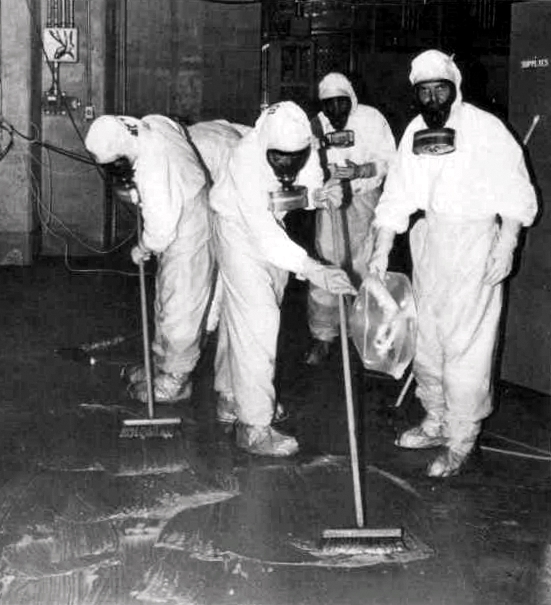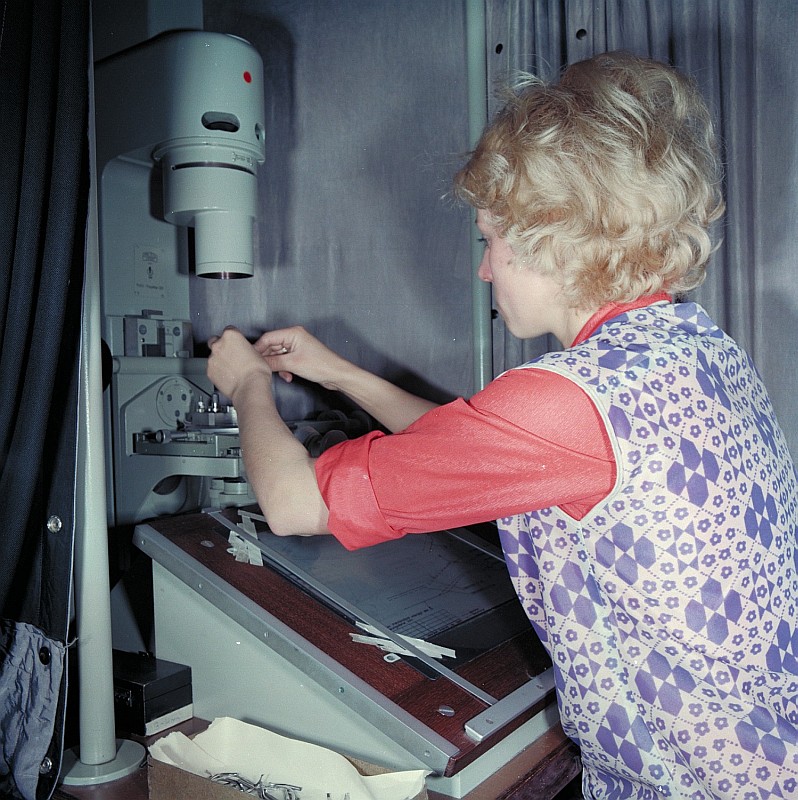|
Canadian National Calibration Reference Centre
The National Calibration Reference Centre for Bioassay and ''In Vivo'' Monitoring (NCRC) is administered by the Radiation Protection Bureau of the Canadian Federal Department of Health. It was created in 1982 through a Memorandum of Understanding (MOU) signed between the regulator of the nuclear industry, the Canadian Nuclear Safety Commission (CNSC), formerly the Atomic Energy Control Board, and the Department of Health with the specific mission of providing "practical reference standards" for measurements used for internal dosimetry. Two other Reference Centres were created at the same time. These were to have equivalent roles for (1) external dosimetry and (2) radon and radioactive atmospheres, and were administered, respectively, by the Canadian National Research Council and the federal Department of Energy, Mines and Resources. The choice of the three agencies to act as Reference Centres was based on their expertise acquired over years of work in their respective fields and t ... [...More Info...] [...Related Items...] OR: [Wikipedia] [Google] [Baidu] |
Health Canada
Health Canada (HC; french: Santé Canada, SC)Health Canada is the applied title under the Federal Identity Program; the legal title is Department of Health (). is the department of the Government of Canada responsible for national health policy. The department itself is also responsible for numerous federal health-related agencies, including the Canadian Food Inspection Agency (CFIA) and the Public Health Agency of Canada (PHAC), among others. These organizations help to ensure compliance with federal law in a variety of healthcare, agricultural, and pharmaceutical activities. This responsibility also involves extensive collaboration with various other federal- and provincial-level organizations in order to ensure the safety of food, health, and pharmaceutical products—including the regulation of health research and pharmaceutical manufacturing/testing facilities. The department is responsible to Parliament through the minister of health—presently Jean-Yves Duclos—as part ... [...More Info...] [...Related Items...] OR: [Wikipedia] [Google] [Baidu] |
Nuclear Safety
Nuclear safety is defined by the International Atomic Energy Agency (IAEA) as "The achievement of proper operating conditions, prevention of accidents or mitigation of accident consequences, resulting in protection of workers, the public and the environment from undue radiation hazards". The IAEA defines nuclear security as "The prevention and detection of and response to, theft, sabotage, unauthorized access, illegal transfer or other malicious acts involving nuclear materials, other radioactive substances or their associated facilities". This covers nuclear power plants and all other nuclear facilities, the transportation of nuclear materials, and the use and storage of nuclear materials for medical, power, industry, and military uses. The nuclear power industry has improved the safety and performance of reactors, and has proposed new and safer reactor designs. However, a perfect safety cannot be guaranteed. Potential sources of problems include human errors and external even ... [...More Info...] [...Related Items...] OR: [Wikipedia] [Google] [Baidu] |
Atomic Energy Control Board
The Canadian Nuclear Safety Commission (CNSC; french: Commission Canadienne de sûreté nucléaire) is the federal regulator of nuclear power and materials in Canada. Mandate and history Canadian Nuclear Safety Commission was established under the 1997 ''Nuclear Safety and Control Act'' with a mandate to regulate nuclear energy, nuclear substances, and relevant equipment in order to reduce and manage the safety, environmental, and national security risks, and to keep Canada in compliance with international legal obligations, such as the Treaty on the Non-Proliferation of Nuclear Weapons. It replaced the former Atomic Energy Control Board (AECB, French: ''Régie de energie atomique''), which was founded in 1946. The CNSC is an agency of the Government of Canada which reports to the Parliament of Canada through the Minister of Natural Resources. In 2008, Linda Keen the president and the chief executive officer of the CNSC was fired following a shortage of medical radioisotopes in ... [...More Info...] [...Related Items...] OR: [Wikipedia] [Google] [Baidu] |
National Research Council (Canada)
The National Research Council Canada (NRC; french: Conseil national de recherches Canada) is the primary national agency of the Government of Canada dedicated to science and technology research & development. It is the largest federal research & development organization in Canada. The Minister of Innovation, Science, and Economic Development (currently, François-Philippe Champagne) is responsible for the NRC. Mandate NRC is an agency of the Government of Canada, and its mandate is set out in the ''National Research Council Act''. Under the Act, the NRC is responsible for: * Undertaking, assisting or promoting scientific and industrial research in fields of importance to Canada; * Providing vital scientific and technological services to the research and industrial communities; * Investigating standards and methods of measurement; * Working on the standardization and certification of scientific and technical apparatus, instruments and materials used or usable by Canadian i ... [...More Info...] [...Related Items...] OR: [Wikipedia] [Google] [Baidu] |
Quality Control
Quality control (QC) is a process by which entities review the quality of all factors involved in production. ISO 9000 defines quality control as "a part of quality management focused on fulfilling quality requirements". This approach places emphasis on three aspects (enshrined in standards such as ISO 9001): # Elements such as controls, job management, defined and well managed processes, performance and integrity criteria, and identification of records # Competence, such as knowledge, skills, experience, and qualifications # Soft elements, such as personnel, integrity, confidence, organizational culture, motivation, team spirit, and quality relationships. Inspection is a major component of quality control, where physical product is examined visually (or the end results of a service are analyzed). Product inspectors will be provided with lists and descriptions of unacceptable product defects such as cracks or surface blemishes for example. History and introduction ... [...More Info...] [...Related Items...] OR: [Wikipedia] [Google] [Baidu] |
Public Utility
A public utility company (usually just utility) is an organization that maintains the infrastructure for a public service (often also providing a service using that infrastructure). Public utilities are subject to forms of public control and regulation ranging from local community-based groups to statewide government monopolies. Public utilities are meant to supply goods/services that are considered essential; water, gas, electricity, telephone, and other communication systems represent much of the public utility market. The transmission lines used in the transportation of electricity, or natural gas pipelines, have natural monopoly characteristics. If the infrastructure already exists in a given area, minimal benefit is gained through competing. In other words, these industries are characterized by ''economies of scale'' in production. There are many different types of public utilities. Some, especially large companies, offer multiple products, such as electricity and nat ... [...More Info...] [...Related Items...] OR: [Wikipedia] [Google] [Baidu] |
Absorbed Dose
Absorbed dose is a dose quantity which is the measure of the energy deposited in matter by ionizing radiation per unit mass. Absorbed dose is used in the calculation of dose uptake in living tissue in both radiation protection (reduction of harmful effects), and radiology (potential beneficial effects for example in cancer treatment). It is also used to directly compare the effect of radiation on inanimate matter such as in radiation hardening. The SI unit of measure is the Gray (unit), gray (Gy), which is defined as one Joule of energy absorbed per kilogram of matter. The older, non-SI Centimetre–gram–second system of units, CGS unit rad (unit), rad, is sometimes also used, predominantly in the USA. Deterministic effects Conventionally, in radiation protection, unmodified absorbed dose is only used for indicating the immediate health effects due to high levels of acute dose. These are tissue effects, such as in acute radiation syndrome, which are also known as deterministic ... [...More Info...] [...Related Items...] OR: [Wikipedia] [Google] [Baidu] |
2000
File:2000 Events Collage.png, From left, clockwise: Protests against Bush v. Gore after the 2000 United States presidential election; Heads of state meet for the Millennium Summit; The International Space Station in its infant form as seen from STS-97; The 2000 Summer Olympics are held in Sydney; A U.S. Air Force MH-53 flies over the 2000 Mozambique flood; An Air France Concorde similar to the one that crashed after takeoff from Charles de Gaulle Airport; The USS Cole is bombed by Al-Qaeda; Times Square after the ball drop that heralded the New Millennium., 300x300px, thumb rect 0 0 200 200 Bush v. Gore rect 200 0 400 200 Millennium Summit rect 400 0 600 200 Expedition 1 rect 0 200 300 400 Millennium celebrations rect 300 200 600 400 2000 Summer Olympics rect 0 400 200 600 USS Cole bombing rect 200 400 400 600 Air France Flight 4590 rect 400 400 600 600 2000 Mozambique flood 2000 was designated as the International Year for the Culture of Peace and the W ... [...More Info...] [...Related Items...] OR: [Wikipedia] [Google] [Baidu] |
Specification
A specification often refers to a set of documented requirements to be satisfied by a material, design, product, or service. A specification is often a type of technical standard. There are different types of technical or engineering specifications (specs), and the term is used differently in different technical contexts. They often refer to particular documents, and/or particular information within them. The word ''specification'' is broadly defined as "to state explicitly or in detail" or "to be specific". A requirement specification is a documented requirement, or set of documented requirements, to be satisfied by a given material, design, product, service, etc. It is a common early part of engineering design and product development processes in many fields. A functional specification is a kind of requirement specification, and may show functional block diagrams. A design or product specification describes the features of the ''solutions'' for the Requirement Specificati ... [...More Info...] [...Related Items...] OR: [Wikipedia] [Google] [Baidu] |
Quality Assurance
Quality assurance (QA) is the term used in both manufacturing and service industries to describe the systematic efforts taken to ensure that the product(s) delivered to customer(s) meet with the contractual and other agreed upon performance, design, reliability, and maintainability expectations of that customer. The core purpose of Quality Assurance is to prevent mistakes and defects in the development and production of both manufactured products, such as automobiles and shoes, and delivered services, such as automotive repair and athletic shoe design. Assuring quality and therefore avoiding problems and delays when delivering products or services to customers is what ISO 9000 defines as that "part of quality management focused on providing confidence that quality requirements will be fulfilled". This defect prevention aspect of quality assurance differs from the defect detection aspect of quality control and has been referred to as a ''shift left'' since it focuses on quality eff ... [...More Info...] [...Related Items...] OR: [Wikipedia] [Google] [Baidu] |
Radionuclide
A radionuclide (radioactive nuclide, radioisotope or radioactive isotope) is a nuclide that has excess nuclear energy, making it unstable. This excess energy can be used in one of three ways: emitted from the nucleus as gamma radiation; transferred to one of its electrons to release it as a conversion electron; or used to create and emit a new particle ( alpha particle or beta particle) from the nucleus. During those processes, the radionuclide is said to undergo radioactive decay. These emissions are considered ionizing radiation because they are energetic enough to liberate an electron from another atom. The radioactive decay can produce a stable nuclide or will sometimes produce a new unstable radionuclide which may undergo further decay. Radioactive decay is a random process at the level of single atoms: it is impossible to predict when one particular atom will decay. However, for a collection of atoms of a single nuclide the decay rate, and thus the half-life (''t''1/2) ... [...More Info...] [...Related Items...] OR: [Wikipedia] [Google] [Baidu] |





